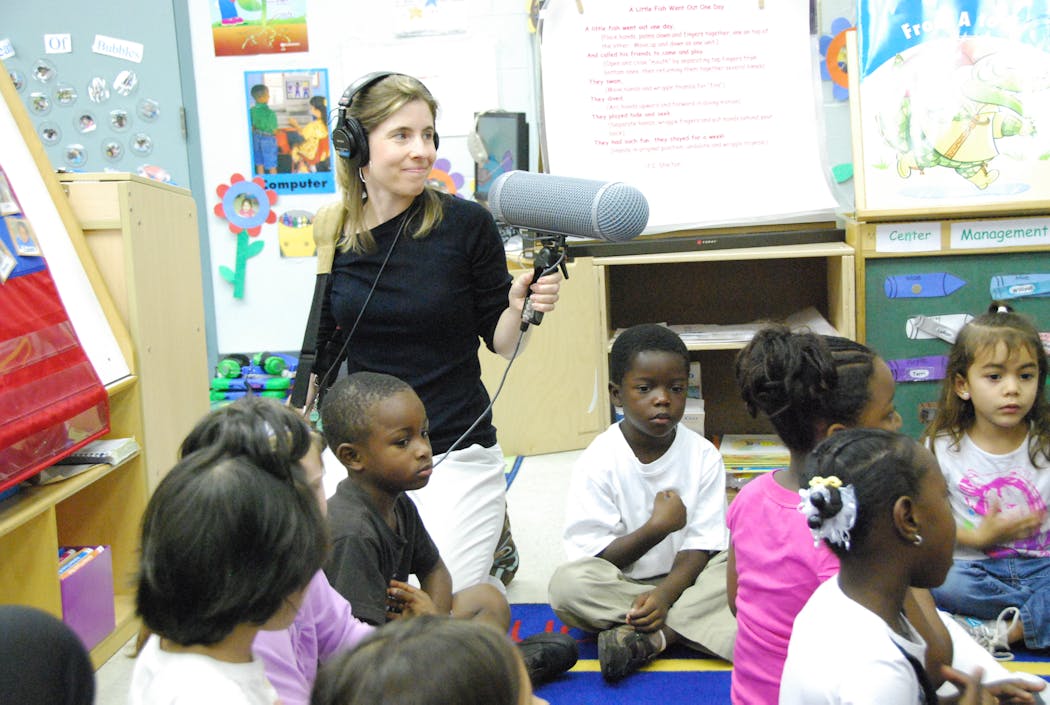It was almost bedtime, and my heart flittered with pride as my 5-year-old attempted to read a new word.
He was steadily progressing through a palm-sized early-reader book with such scintillating turns of phrase as: "The ten kids hid in a big bag. But the bag had a rip."
"Buh. Aaa. Guh," my son intoned, sounding out each letter.
My 9-year-old son, who had been listening, wanted to heave him over the hump. I'm sure he had good intentions when he pointed to the page and told his kid brother, "Look at the picture. What do you think the word could be?"
In education parlance, that's called "cueing." I asked him not to do that.
"Why? That's what my teachers told me to do when I'm stuck on a word," he said.
Cueing is a strategy for early readers that is based on a disproven theory about how reading works. Children are encouraged to look at the picture, take stock of the first letter of the word, and guess the word — rather than crack the code of the English language, the very key to literacy. Sounding out the letters is a last resort.
Even though the concepts behind cueing have been discredited by scientists for about 30 years, it's still being taught in our schools today.
I know this only because I am hooked on Emily Hanford's reporting. A senior correspondent for St. Paul-based American Public Media, Hanford has spent years dispelling the myths we've told ourselves about how kids learn to read. In some of her earlier audio documentaries, she explained what cueing is and how it's not supported by evidence. In her latest project, a podcast called "Sold a Story: How Teaching Kids to Read Went So Wrong," she and fellow reporter Christopher Peak try to answer the question of why we're still teaching it in 2022.
The story we've been sold is that kids don't have to sound out the words. They have all these other ways to figure it out, such as visual clues, context and their knowledge of language. Reading the words will come.
"That's not the way it works," she tells me. "It's sort of the opposite."
Many teachers, through no fault of their own, have been taught that guessing the word is how good readers read. But it's actually a strategy of struggling readers.
Hanford says that while many kids will learn to decode words no matter how they're taught, about half need explicit and direct instruction. It's not enough to be read books every night. If you're not born with a brain that easily grasps reading, you should hope to be born into a family with resources, like money to pay for a private tutor, or have parents with time to teach you how to read themselves.
Americans just received a national report card showing that our kids are continuing along a downward trend that preceded the pandemic, with only about a third of students hitting national proficiency levels for reading. In Minnesota, fourth-graders registered test scores below the national average.
Hanford is frustrated that we've blamed kids or their families for their inability to read. Explaining it away often sounds like: "Their parents didn't read to them or talk to them enough. It's poverty. Schools can't overcome these inequalities."
"The parents who helped me understand this issue when I was reporting about kids with dyslexia were for the most part middle- and upper-middle-class parents," she says. "They did all the quote-unquote 'right things.' They had tons of books in the house, they read to their kids, they went to museums. The kid goes to school and can't read. And the school says, 'Did you read to them?' "
Good reading instruction might not eliminate the very real achievement gaps that present themselves when kids report to the first day of kindergarten, but poor reading instruction exacerbates inequality.
COVID-19 and the closing of schools did not help our country's reading crisis. But one silver lining is that it afforded parents some transparency in the classroom — which entered our homes, via Zoom. "The pandemic allowed some parents for the first time to see how their kids are being taught," Hanford told me.
If you're a parent, you may be wondering if your child's school is teaching reading in a way that's backed up by science. It's tricky because everyone believes their approach is research-based. Terms like "balanced literacy" or "whole language" sound good, but these curricula often rely on cueing strategies to help kids guess unknown words, without sufficient amounts of phonics instruction.
Hanford says parents should trust their gut and ask questions. Does the school have a plan on how it will teach kids to read, or is it expecting children to figure out a lot of it on their own? Are kindergartners spending 30 minutes a day in "independent reading," when most have yet to learn to read? How much time is being devoted to phonics? You can find a tip sheet that Hanford created for parents at bit.ly/2y8eJRm.
"If your child is really having problems by the end of first grade, you should not ignore it," she says. "Reading is exponential. The gaps widen quickly because of the way reading works."
Another big thing we've gotten wrong over the years is telling ourselves that a kid learning to read is anything but magical.
When my younger son sounded out the letters of b-a-g, eventually it clicked. He knew this word. "Bag!"
He will have thousands of moments like this, moments that create new neural pathways in his brain, allowing him to remember words like this in print, Hanford tells me. His brain will map words into his memory on his way to becoming a good reader.
"For too long we've told ourselves a story that there's something tedious and boring about all the work that goes into a child learning how to read," she says. "It's the opposite. When you see a little kid learning to read, it's so exciting. Every parent knows that."
Let's make sure every kid experiences these moments. Let them know there's nothing tiresome about sounding it out. Watch and celebrate as those gears turn, because those are the keys to opening up their world.

Your fridge is a place where fresh food goes to die. That doesn't have to happen.

Yuen: He donated his sperm to friends. Now he wants to be dad to the 5-year-old.

Yuen: This Minnesota man has written thousands of poems over more than a decade — all to his wife





